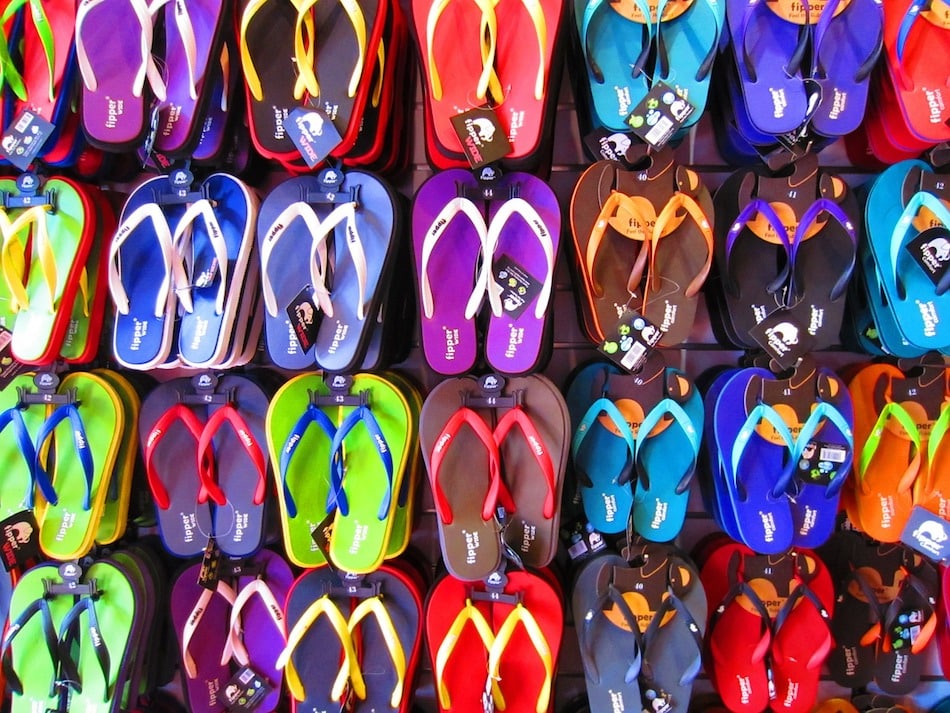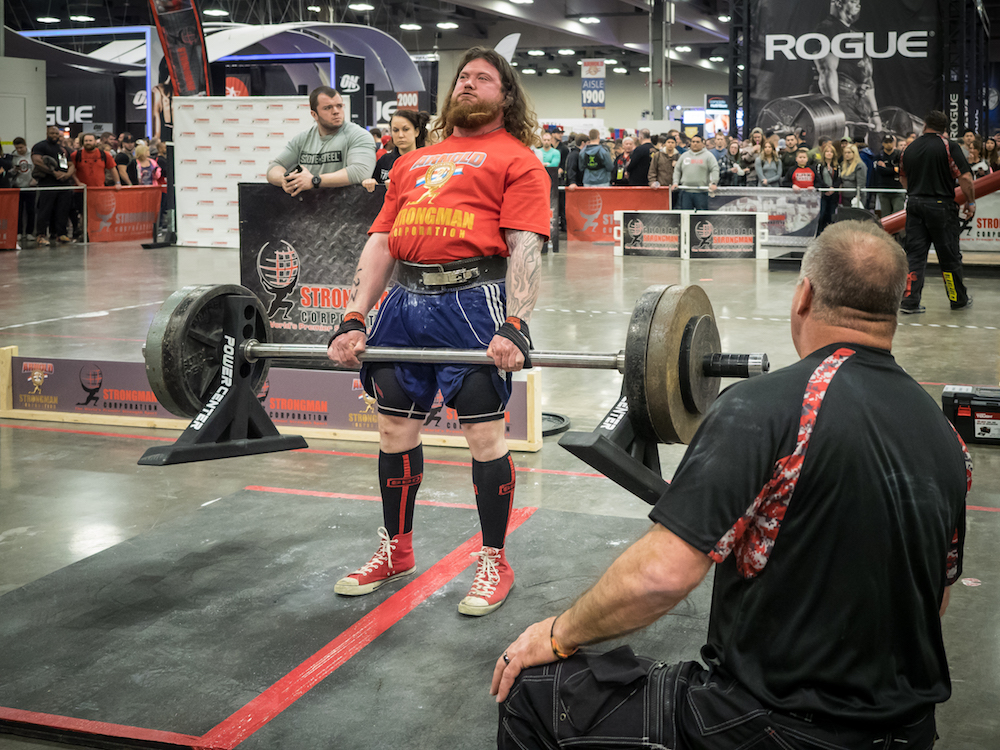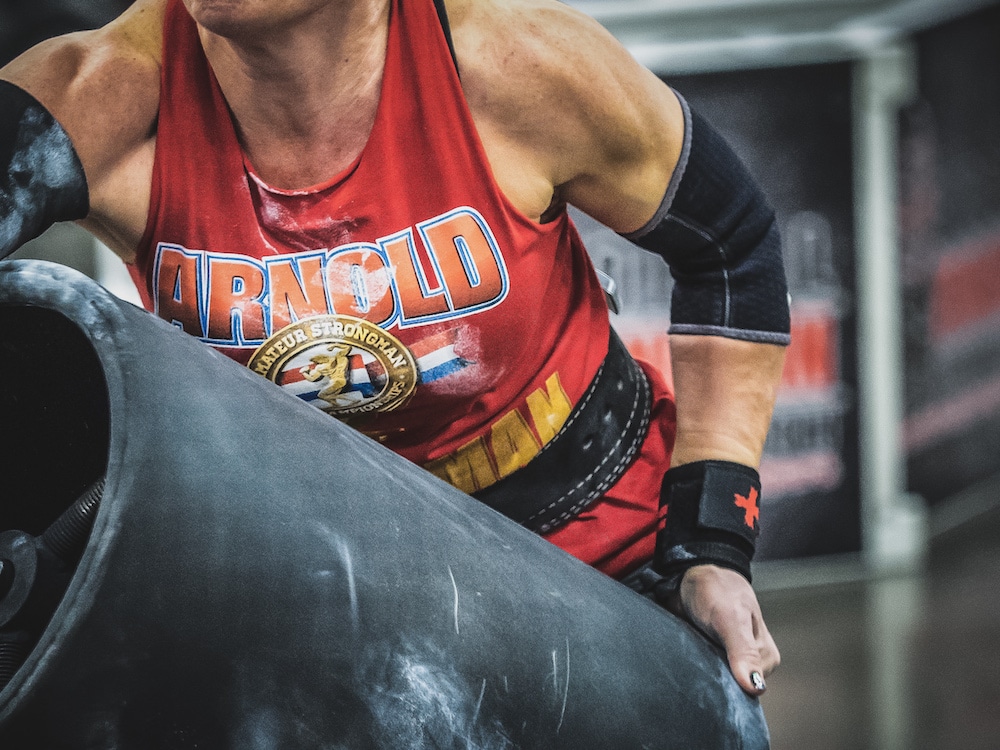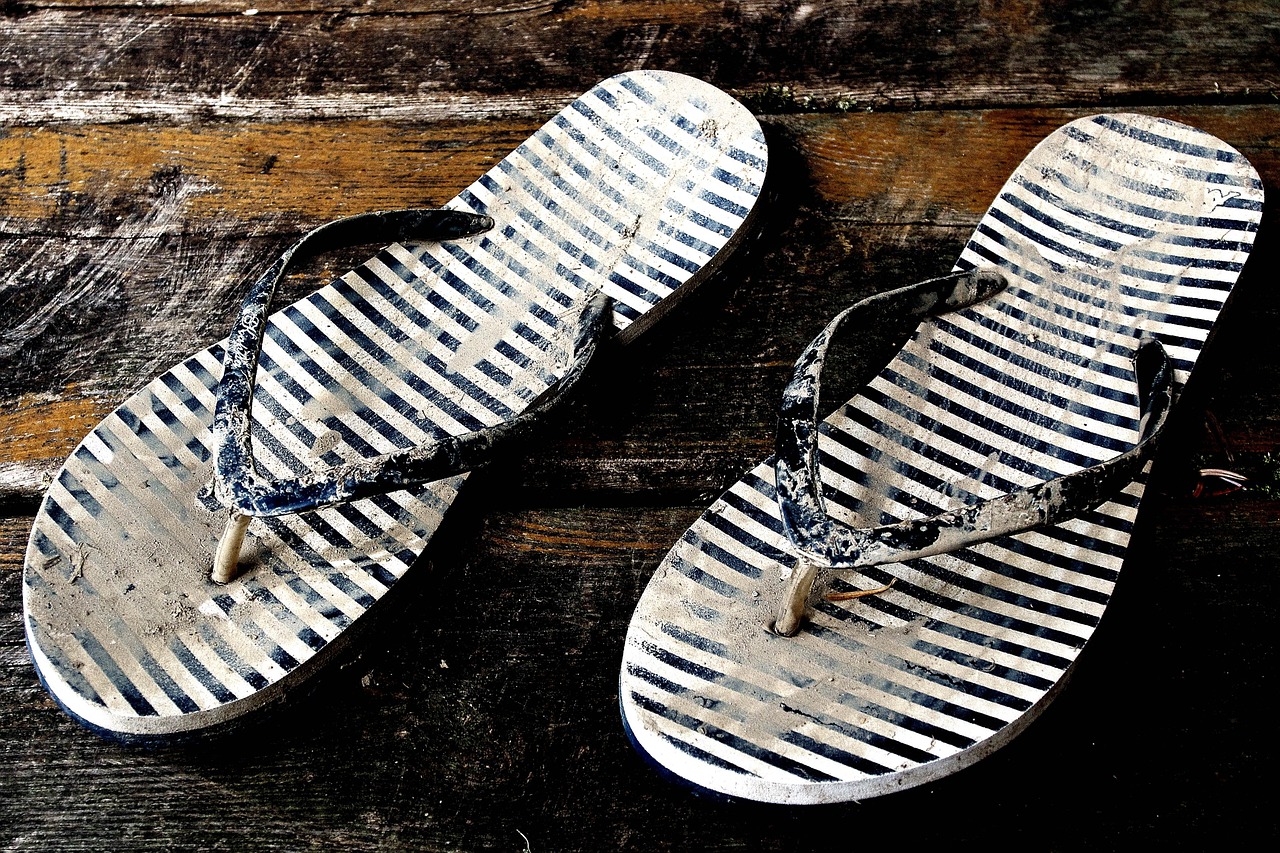If you’re an athlete, you’ve heard the overused lifting cue “find your feet.” Or to start your squat “from the ground up.” Or “grip the floor” when lifting. Or “push through the floor” when deadlifting.
You see what we’re getting at: most of your lifts start at your feet. But most of us spend next to no time thinking about the health of our feet when compared to how much time we spend agonizing about the health of, say, our scaps or our biceps.
Athletes who take their training seriously probably know to minimize the use of high heels but while the weather’s warmer and dress codes are laxer, it’s time we answered the eternal question: should athletes avoid flip flops?

Editor’s note: The content on BarBend is meant to be informative in nature, but it should not be taken as medical advice. The opinions and articles on this site are not intended for use as diagnosis, prevention, and/or treatment of health problems.
What’s the Big Deal?
First off, we’re not saying that flip flops (or “thongs” for our Australian brethren) necessarily damage healthy feet in the way that high heels do.
“There are two main pathways that they can damage feet,” says Dr. Neal Blitz, DPM, FACFAS, a New York- and Los Angeles-based foot surgeon. “If you have a flatter foot, that can come with bunions and hammer toes, and flip flops further destabilize the foot. The second is if you have a very high arch, you’ll generally have more balance problems and flip flops don’t offer any of the stability that those people need.”
In other words, these shoes offer very little support and stability and if you have a structural problem or deformity like flat feet or high arches, flip flops exacerbate the issue. (And if you see a podiatrist for flat or high arches, they’ll probably recommend wearing supportive shoes as much as you can.)
[Learn more: 3 simple exercises for stronger, healthier feet.]
What if your feet are in great shape? When we’re talking about excessive, all-day-most-days wear, podiatrist Dr. Robert Weiss, DPM has noted that flip flops can cause plantar fasciitis, when tissue along the bottom of the foot becomes inflamed. That can lead in turn to heel spurs, arthritis, and bunions, particularly among people who tend to pronate their feet. Researchers at Auburn University have even found that after two days of just wearing flip flops, the sandals changed the way wearers walk, resulting in reduced stride length, ankle dorsiflexion, and braking impulse.
Blitz doesn’t think there’s quite as much to worry about if you have healthy feet and you don’t wear them too much, it’s just that while flip flops probably aren’t making things worse, but they’re not making things any better.
“There’s definitely no support and they’re not really letting your body react to the ground (but) if you have no foot problems whatsoever and you’ve got well-aligned feet, there are no hammer toes or bunions or calluses or general foot pain then flip flops are OK to wear,” he says.
The idea is that if you’re an average joe and you’re wearing them to the beach or to the laundromat it’s not a big deal, though longer distances can be another story. Feet may have the thickest skin on the body, but they also need care and support and flip flops don’t provide it.
And then there are athletes.
https://www.instagram.com/p/BjHpnskgaSO/
Should Athletes Wear Flip Flops?
When you take your sport seriously, you probably want your footwear to be optimized for performance and recovery. You don’t wear flip flops for workouts, but for in between?
Blitz errs on the side of “they’re not bad for you but they’re not exactly good for you,” however he did note that functional fitness athletes, strongmen, and other strength athletes train at high levels and put a considerable amount of strain on their arches and tendons. It’s a good idea to support those structures when possible so that they’re not getting overstrained, and flip flops don’t do that.
Even going barefoot is probably better for your recovery than flip flops. No shoes at all can actually be considered superior in some instances, since it gets the toes and muscles moving and responding to the ground in ways they don’t when you’re wearing shoes, which can improve proprioception and general function.
[Is it actually better to lift barefoot? Here’s the real story.]
“I will tell you that my athletes are generally hyper focused on their shoes because they want to train at the highest level, so they tend to not be in the same boat as someone who is wearing flip flops or sandals for fashion,” says Blitz, adding,
These are really high-demand people and their feet take a lot of beating.
When your extremities are in high demand, the muscles and tendons tend to get sore and there’s a high rate of tendonitis and inflammation that can go on in the foot, ankle, and leg, especially during recovery periods.
A flip flop doesn’t provide any extrinsic support to get you through that and if you do have tendonitis in, say, your Achilles tendon, a flip flop actually puts more strain on the foot.
Wrapping Up
The importance of this question depends a lot on how healthy your feet are, how hard you train, and how often you train. Do you stick to basic powerbuilding workouts three times a week with plenty of (well-supported) walking in between? Then wearing flip flops for a couple of hours here and there probably won’t be an issue.
Are you training hard and high impact six days a week? Trying to qualify for the CrossFit Regionals? Hoping to win (Your State)’s Strongest Man? Then you need to optimize your footwear and just about everything else to maximize your recovery. Flip flops probably won’t do that.


